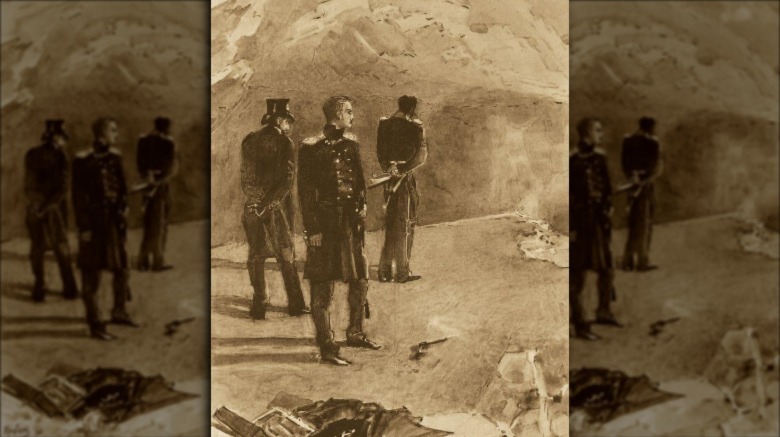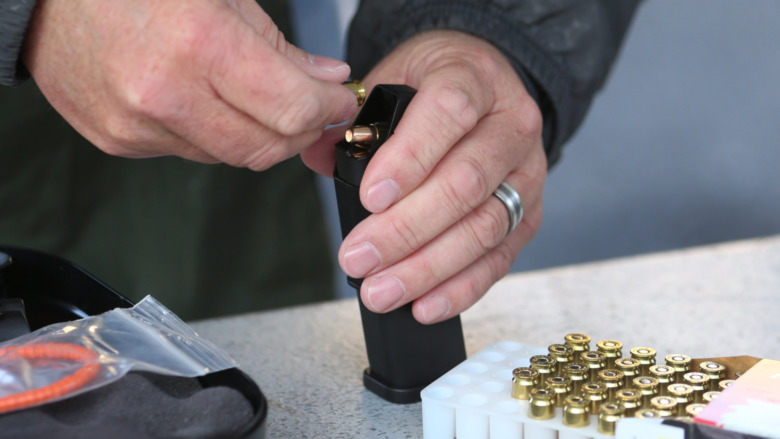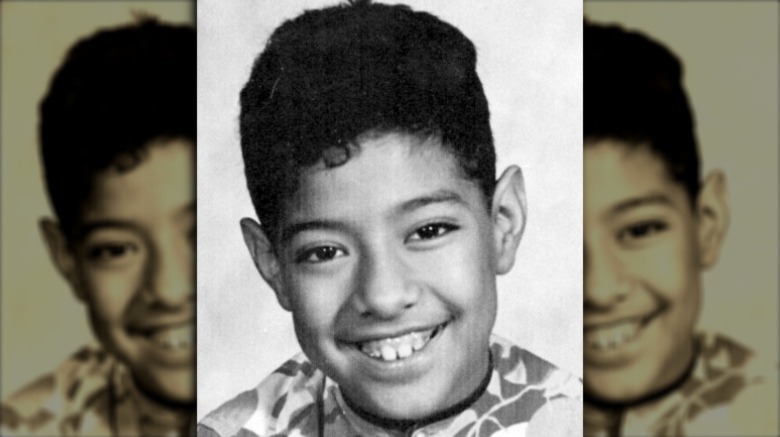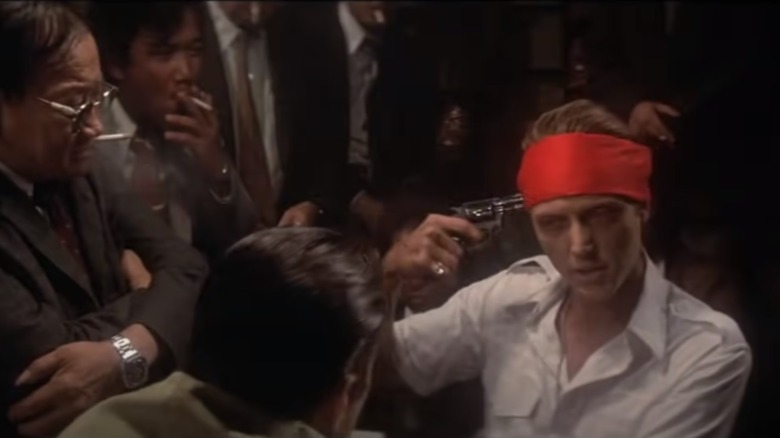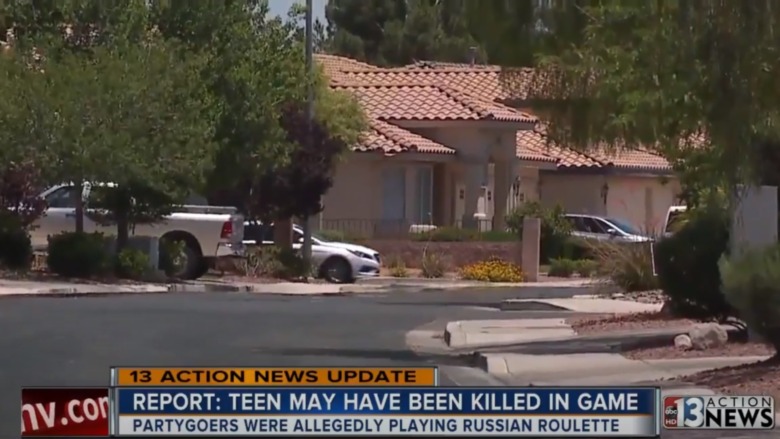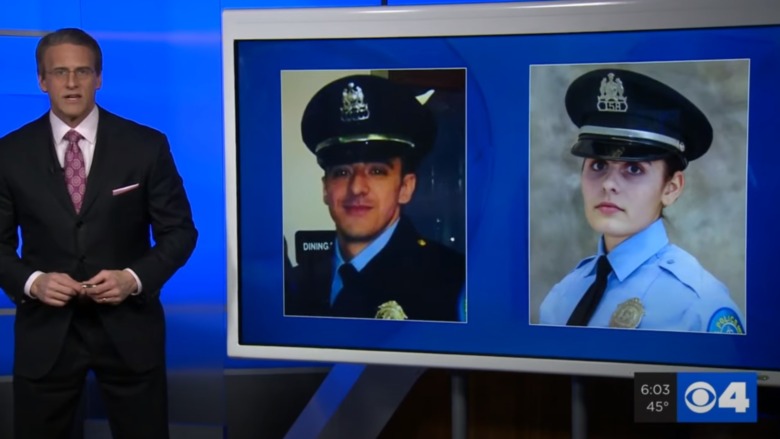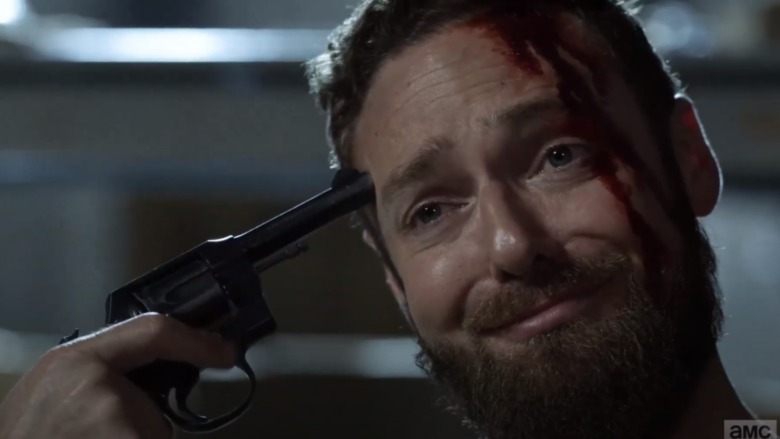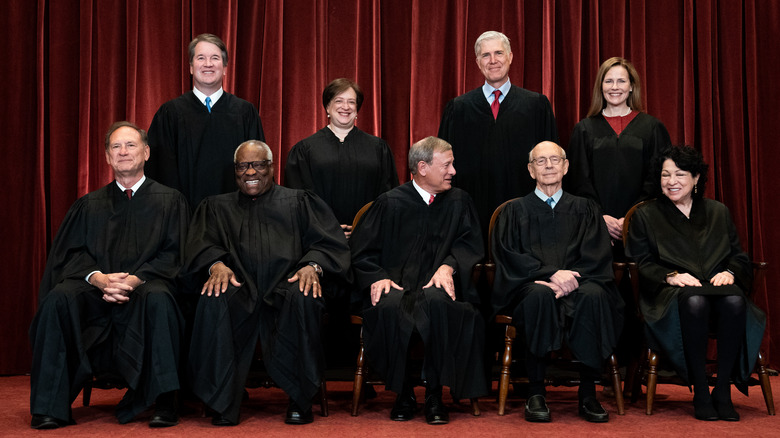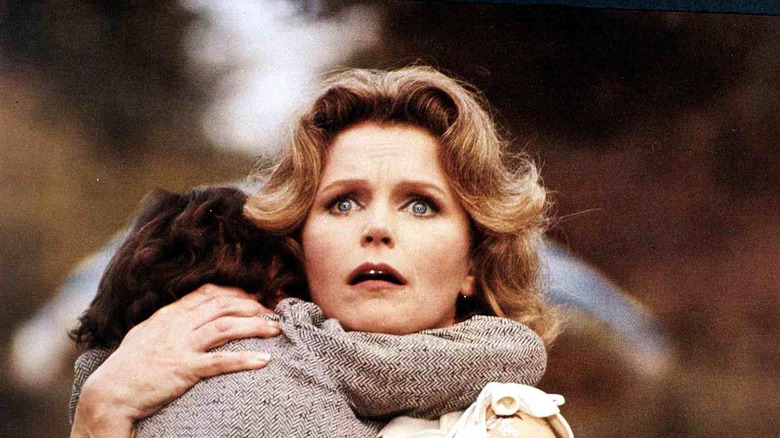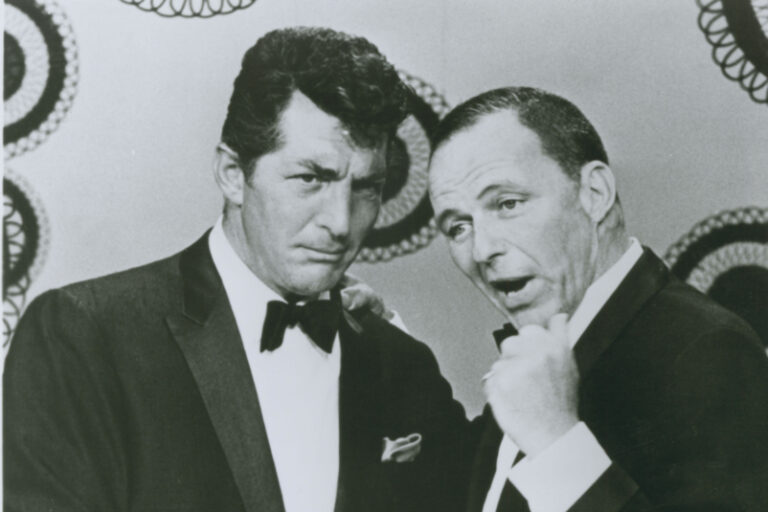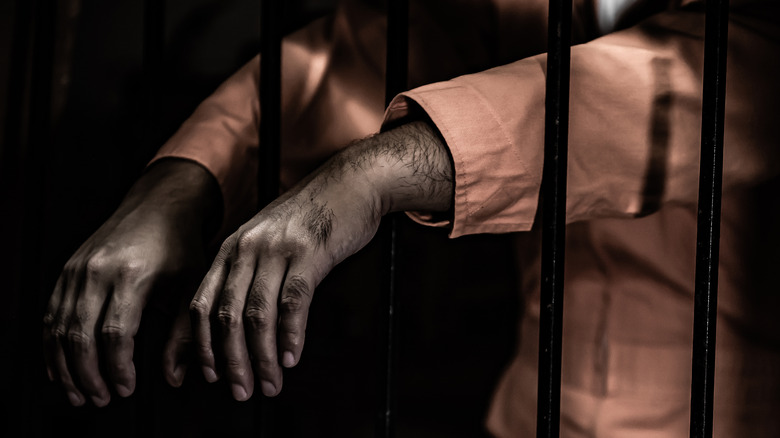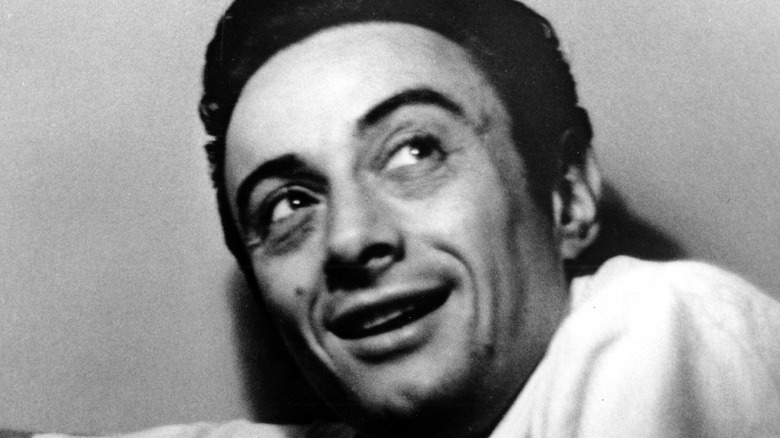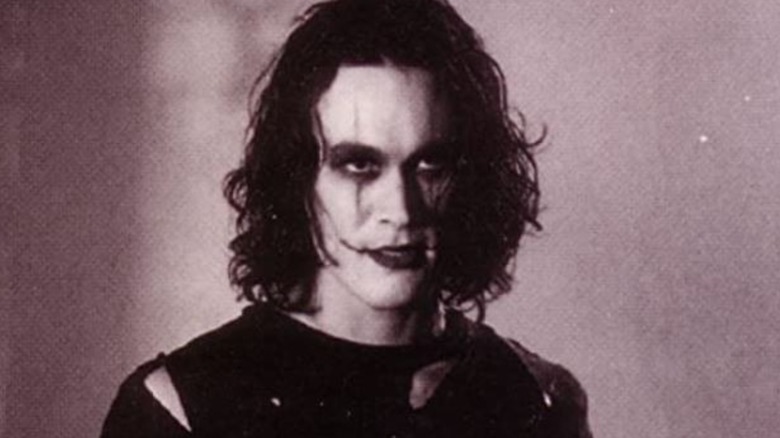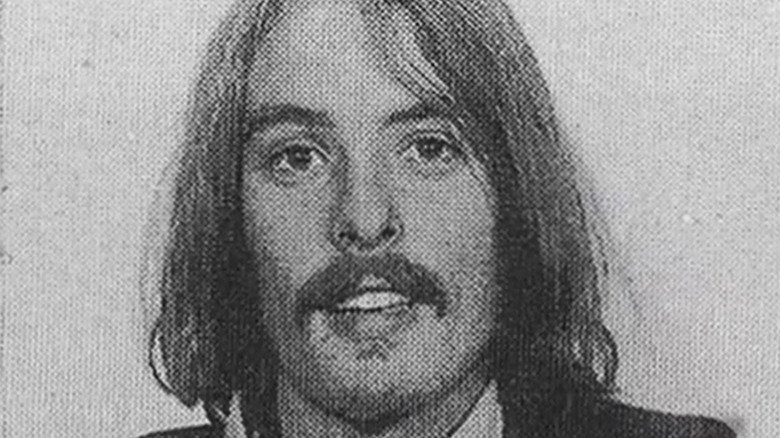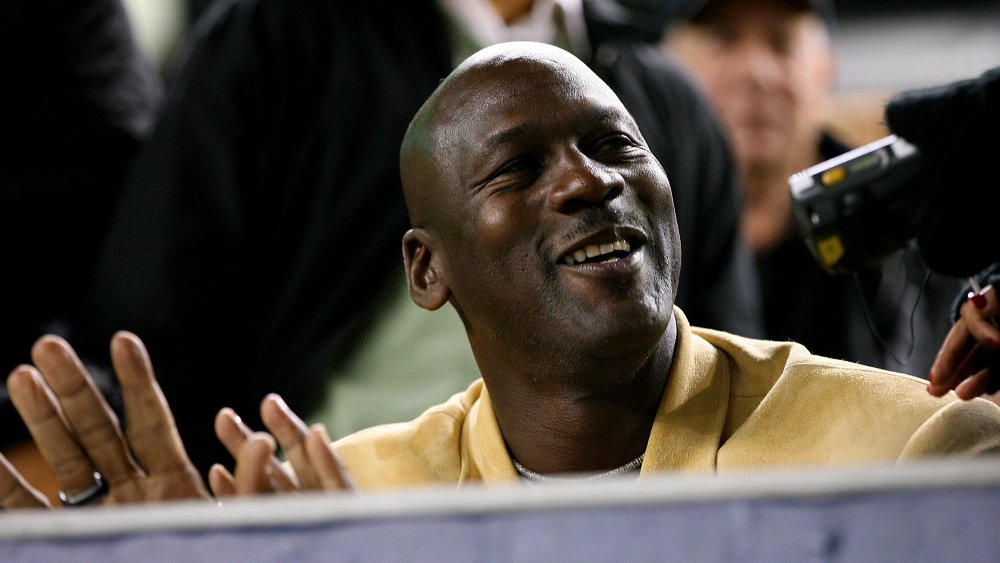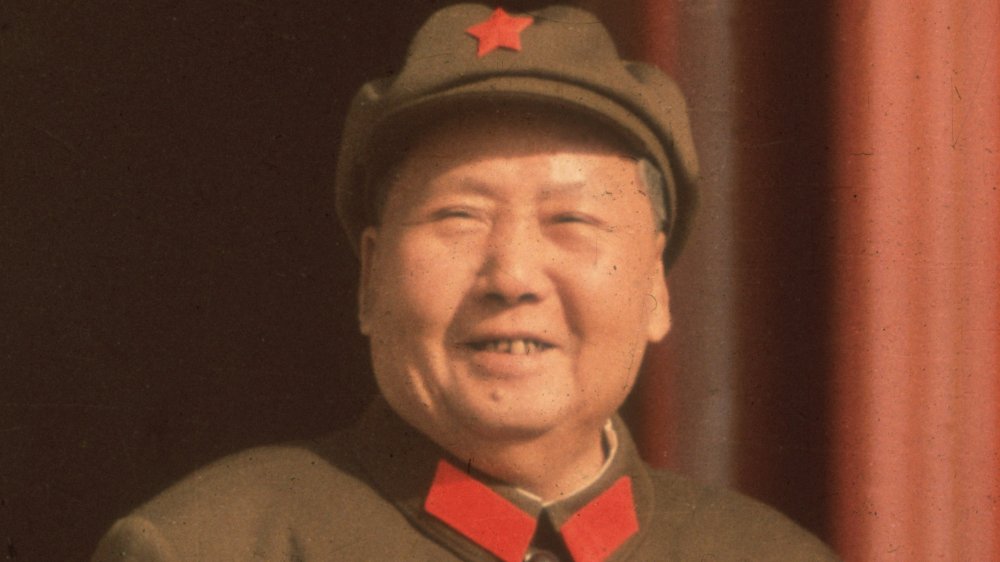
The Messed Up Truth About Russian Roulette
The term “Russian roulette” is often used to refer to taking a potentially dangerous chance on something, and it commonly pops up in reference to things like economics and foreign policy. It’s also the name of a song by Rihanna, so it’s got that going for it, too. So many things are called “playing Russian roulette” that it’s easy to forget how deadly the real thing is. The basics are simple: a certain number of bullets are loaded into a revolver, and some chambers are left empty. “Players” take turns either pointing the gun at themselves or each other, then they pull the trigger. If you live? You win.
But the truth really is stranger than fiction, because it’s a very real thing that seems like it should be more at home solely on the big screen, or in the pages of a fiction novel. But it’s terrifyingly real, and the stories about it always seem like they’re just a little bit not true. Novelist and journalist Graham Greene, for example, said (via The Guardian) that he’d played with Fidel Castro — so many times that he’d figured out based on the odds, they should have died. History is weird.
So, let’s take a look at the very real phenomenon of Russian roulette — and add that this is a game you never want to play.
If you or anyone you know is having suicidal thoughts, please call the National Suicide Prevention Lifeline at 1-800-273-TALK (8255).
It started long before it was called Russian roulette
When it comes to the history of Russian roulette, there’s a lot of “as the story goes,” going on. Take the first person to survive playing … that we know of. According to The Spokesman, that dubious honor goes to the Cambridge University roommate of Lord Byron. (Fun fact: Culture Trip says that when Byron found out that dogs weren’t allowed in the dorms, he got around it by buying a bear and bringing it instead. It kind of puts any stories about his roommate into perspective.) Byron wrote about the episode in 1808, so why isn’t it called Cambridge roulette?
In 1840, Russian novelist Mikhail Lermontov wrote “A Hero of Our Time,” and recounts a tale of a man debating whether or not our fate and death is predetermined. To try to somehow prove the point, he fires his gun at his head. It doesn’t go off — so he points it at a wall and fires again. That time, it goes off. (What that proves about fate is up for debate, because a few hours later, he’s killed by a man swinging a sword and chasing a pig. Spoiler alert.)
Today I Found Out says that’s where the Russian connection comes in, and it wasn’t until around 1917 — after the invention of more modern revolvers — that the idea of spinning the cartridge and wondering if you’re going to die was practiced among the military in Russia.
Let's talk math
Most of the time, Russian roulette involves a 6-cylinder revolver. There are a couple different versions of rules, but the basics is that with each pull of the trigger, the unfortunate participant has a 1-in-6 chance of ending his or her life.
Data Genetics says there’s a Russian roulette-related question that was used in job interviews for a while, and it was basically this: two bullets are loaded, and the first trigger pull is on an empty cylinder. Do you spin the cylinder, or just pull? On the off chance that you happen to be faced with this particular interview question, we’ll help you out. The answer is to just pull — at that point, there’s a 66.7% chance you’ll come up with another empty cylinder, while spinning it again puts you back at square one.
The math behind calculating the probabilities of more (or randomly placed) bullets gets even harder, and the bottom line is that you don’t really ever want to be in this position for real. Still, here’s a fun fact that fiction writers everywhere will appreciate, and it comes via Technology. The older (and more well-oiled) a revolver is, the better the chances are that the gun isn’t going to fire. Why? Balance and weight — the heavier, bullet-filled chamber is more likely to settle at the bottom. (While that might be a great bit of trivia for a super-spy protagonist, it’s important to mention that’s still not a 100%, real-life guarantee.)
The landmark court case that set a major precedent
Let’s start with a definition (via Cornell Law School): Murder, says US law, is “the unlawful killing of a human being with malice aforethought.” That basically means that in order for a person to be found guilty of murder, there has to be an intention to kill. Seems pretty straightforward, but it definitely isn’t.
Take the 1946 case of Commonwealth v. Malone. The former is Pennsylvania, and the latter is James Malone. He was found guilty of killing his friend while they were playing a game of Russian roulette, and he argued that since he hadn’t actually intended to kill his friend, the murder conviction shouldn’t stand. Since it’s malice and intent that’s needed for a murder conviction, did the fact that he said he wasn’t actually trying to actively kill his friend mean he couldn’t be convicted?
Nope. According to the Supreme Court of Pennsylvania (via LexisNexis), intent could basically be proven by the fact that they were doing something so insanely, recklessly, irresponsibly dangerous as playing Russian roulette. The murder charge was upheld “because of the reckless disregard for the consequences of a game of Russian roulette,” and it was essentially ruled that if you’re “wicked” enough to partake in “an uncalled-for act in callous disregard of its likely harmful effects on others,” then that’s murder.
Remember when Bugs Bunny played?
These days, it’s video games that get the blame for childhood violence, and that makes it easy to forget previous generations had their violent pastimes, too — like watching Looney Tunes, and seeing episodes containing what Retro Junk describes as “suicide gags.”
Sounds pretty unthinkable for a children’s cartoon, right? It wasn’t, and at least one — a 1951 Bugs Bunny cartoon called “Ballot Box Bunny” — has Bugs and Yosemite Sam playing Russian roulette. In this particular case, they’ve both just learned they’ve lost the election for mayor, and decide that there’s nothing left but a little Russian roulette. In the original version, Sam goes first and the gun doesn’t go off. He passes it to Bugs, who takes aim and yes, the gun fires. The “gag” is that he misses and shoots Sam in the head instead, that’s still some seriously questionable humor.
TV Tropes says that television networks weren’t entirely sure what to do with the episode once people realized suicide wasn’t really something that kids should see their favorite cartoon characters considering, and at least one station decided to make an unfortunate edit that saw Bugs aiming the gun, then fading to black but keeping the sound of the gunshot. Others deleted the ending completely, and weirdly, Cartoon Network has left it unedited and aired in full since 2011.
That’s by far the only instance of olde-timey cartoons treating gun violence as a weirdly light-hearted joke, something that Slate calls “appallingly macabre.”
When Russian roulette led to violent protests across Dallas
The year was 1973, and the place was Dallas. A gas station had just filed a burglary report, and police officers Darrell Cain and Roy Arnold believed they recognized the perpetrators based on the description. They picked up 13-year-old David and 12-year-old Santos Rodriguez at the home of their grandfather, cuffed them, put them in the patrol car, and drove them to the gas station. When neither brother would confess to stealing $8 from a Coke machine, Human Rights Dallas says Cain decided to play a little Russian roulette to get them to confess. That’s when he held the gun to Santos’s head, demanded a confession, and when it didn’t happen, he fired. The gun went off, and Santos was killed instantly.
Within days, thousands of people gathered to protest for justice — and it wasn’t long before the peaceful protest turned bloody. According to KERA News, the incident forced the introduction of things like “racial sensitivity classes,” and resulted in — for the first time — the serious recruiting of minorities into the Dallas police force.
Cain later testified that he had been certain that he emptied the gun but was still convicted of murder … and sentenced to five years in jail (after being released on $5,000 bail.) He served just two and a half years, and as for the burglary? Police later found fingerprints that matched neither boy.
The Russian roulette scene from The Deer Hunter led to real deaths
One of the most famous big-screen depictions of Russian roulette is in “The Deer Hunter,” and here’s a (brief) recap (via Roger Ebert): a group of friends who find themselves embroiled in the Vietnam War are captured by the Vietcong, and are forced to play Russian roulette. One — played by Christopher Walken — stays in Vietnam after the war ends, and plays Russian roulette “professionally.”
We can all guess what happens next, and here’s the question: is there anything to the urban legend that “The Deer Hunter” was connected to real-life people playing real-life Russian roulette, and dying? Snopes says that the answer is, “Yes.” In the years immediately following the film’s 1978 release, there were “28 shootings and 25 confirmed Russian roulette deaths in the United States involving persons who watched the movie on television or videotapes.” That’s according to a psychiatrist named Dr. Thomas Radecki, and at the time he was representing the National Coalition of TV violence, just three years had passed since “The Deer Hunter” was released.
If that sounds like a knee-jerk reaction from an old party pooper who thinks TV is getting out of hand, a little research shows that it’s not exaggerated. Various accounts include the death of a 16-year-old boy in 1980 (via The Washington Post), a 23-year-old man in 1981 (via The New York Times), and even two teens who were recreating the scene in 2000.
The death of a promising young actor
Even joking about playing Russian roulette can be extremely dangerous, as one up-and-coming young actor demonstrated back in 1984.
When The New York Times reported on the death of 26-year-old Jon-Erik Hexum, they said that he had “inadvertently shot himself in the head,” on the set of his television show, “Cover Up.” That was just part of the story, and according to UPI, he had been “playing mock Russian roulette” when the prop .44 Magnum fired a blank directly into his skull. According to Find a Grave, Hexum had believed the gun was unloaded when he started playing with it, but when it discharged, it fractured his skull. Witnesses told a slightly different story, and testified that he had loaded the gun with a few blanks himself, then remarked, “Let’s see if I’ve got one for me,” before discharging the weapon.
Either way, the results were the same: Dr. David Ditsworth explained, “He had no chance of survival from the outset, as an injury of this magnitude is virtually always fatal.” His mother received a wrongful death settlement against 20th Century Fox, and his organs were donated to several different people.
Russian roulette or murder?
In 2018, The Sacramento Bee reported that two teenagers had been arrested after another died in what they had claimed was “a ‘modified’ game of Russian roulette.” The original story told by Jaiden Caruso and Kody Harlan was that they — along with 17-year-old victim Matthew Minkler — had gone to an abandoned Las Vegas house where Caruso had proposed a game of Russian roulette. Harlan testified that he had insisted on being the only one to handle the gun, and that’s how Minkler ended up getting shot.
Minkler’s family, however, said they absolutely didn’t believe the tale — especially when more details started to come out. Neither tried to help him, neither called 911, and they also stole Minkler’s wallet, dragged him into a closet (with obscenities they painted on the door), and then, posted videos of the bloody scene on Snapchat.
In December 2019, the Las Vegas Review-Journal reported that both were found guilty of first-degree murder and robbery with a deadly weapon. While the teens’ attorneys tried to pass the blame onto alcohol and drugs, jurors didn’t buy it: both were sentenced to life in prison with the possibility of parole in 20 years.
The St. Louis law enforcement officers
It isn’t just kids and teenagers who have gotten into trouble playing Russian roulette, and in 2020, The New York Times reported that a St. Louis police officer had officially pleaded guilty to causing the death of a fellow officer.
Nathaniel Hendren had been arrested in the death of Katlyn Alix: both were officers at the time, and according to the story Hendren told after the shooting — and after accusations that the St. Louis Police Department had interfered with the investigation — Hendren had been on duty when he stopped by Alix’s apartment. After loading one round and first firing down the building’s hallway, Hendren gave the revolver to Alix, who aimed it at him. It didn’t fire that time, but when Hendren took his gun back and fired at her, it discharged into her chest.
Hendren’s lawyer later said, “Mr. Hendren has accepted full responsibility for his role in the events of that night. This plea will save the family the trauma of a trial and hopefully aid in the healing process.” Hendren was sentenced to seven years in jail.
Should Russian roulette be magic?
Russian roulette is potentially deadly, so should it be entertainment done on live TV? That’s exactly what happened in 2003, when British magician Derren Brown went on live TV and — he said — played a legit game of Russian roulette. After having a volunteer load one live bullet into the chamber of his gun, he then claimed that he would “use his powers,” The Guardian said, to survive. The planned performance went ahead and about three million people tuned in. Afterwards, the police department that oversaw the area where the stunt was done — Jersey — made a statement saying that the round was a blank, and “there was no live ammunition involved and at no time was anyone at risk.”
Brown’s people indignantly pointed out that the police were ruining the show, and that even if it had been a blank, he still would have died if it went wrong. (Much like what happened in the untimely death of Jon-Erik Hexum, says The New York Times.)
The outcry was massive, and there’s a footnote to this whole thing: Brown wasn’t the first magician to do it. According to Today I Found Out, the magician Aimo Leikas had a Russian roulette act that he had performed for around a year. Until, that is, September 3, 1976. That’s the day the trick went wrong, and he died in front of his audience.
The tragic tale of Alan Cumming's grandfather
There are few actors that can pull off suave sophistication quite like Alan Cumming, and that makes it all the more surprising that he told The Sydney Morning Herald that his ability to act came from a deep sense of self-preservation. He even named the technique — he called it “shutting down” — and he used it to avoid and cope with his father’s abusive rages. Family life was difficult, and Cumming only solved the mystery of what happened to his maternal grandfather while participating in the show “Who Do You Think You Are?.”
Tommy Darling, he learned, had left his wife and children to serve as a dispatch rider during World War II. He was then transferred to India, where he signed up for “British colonial service.” He was killed under mysterious circumstances two years later, and it was always said that he had been cleaning his weapon and that his death was accidental.
It was only when Cumming visited Kuala Lumpur that he realized that not only was there a trail in a local park named for his well-loved grandfather, but that he had actually died in a game of Russian roulette. He had been a regular at the table, Cumming learned, and for him, the revelation had a wider significance (via Express): “For me to think about his story shows how combat stress damages people. Tommy Darling is a complete example of how a life can be lost because of that.”
What next?
“The Walking Dead” first shambled into living rooms in 2010, and it was a massive hit that saw a fair share of struggles and the seasons crawled on. It seemed as though the COVID-interrupted Season 10 was going to struggle along, too, with even an episode focused on fan favorites Carol and Daryl scoring an “eh” 64% on Rotten Tomatoes.
Then, we got to “One More,” the episode with other fan favorites Aaron and Gabriel. They stumble across the outpost of a survivor played by Robert Patrick, and he forces them to play a version of Russian roulette where they can choose to aim the gun either at themselves or the other person, and pull the trigger.
The episode was met with some serious acclaim, scoring 100% on Rotten Tomatoes and being lauded by sites like Looper, Den of Geek, and Digital Spy. In addition to being packed full of some serious drama and a sense of peril that the show’s been missing for a long time, it also looked at a question that often gets overlooked when Russian roulette is on the big or small screen: what happens next? The show answered that with one of the biggest twists they had in a long time, too, which answered the question: what do you do to the people who were making you play … and made viewers ask themselves: who would you point the gun at?

The Reason Some People Thought The World Was Going To End In 1982

The Reason Some Are Convinced Paul McCartney Is A Clone
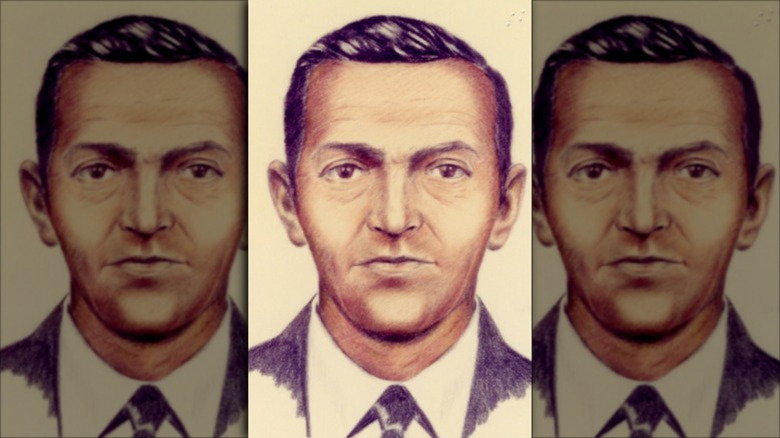
The D.B. Cooper Theory That Would Change Everything

The Reason Beavers Were Eaten During The Medieval Era

What You Need To Know About The Haunted Hotel Del Salto

Walt Disney World Urban Myths People Still Believe

Wu-Tang Clan Is Planning A Theme Park In South Korea

Secret Code Words That No One Is Supposed To Know

The Dark Side Of Selfies

Conspiracy Theories That Blew Everyone's Mind In 2017
